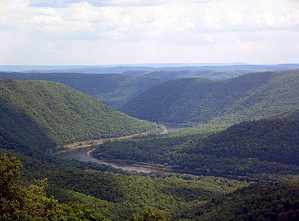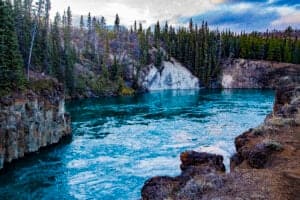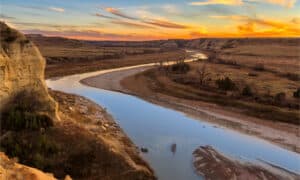The Tigris River is one of the most famous rivers in the world. It is the focus of myth, legend, and ancient history. Empires have risen and fallen along its banks. Cities of tales drew water from its shores. The land along its banks is known as the cradle of civilization, due to the richness of cultural and scientific advancements that were created with the benefits of its water. But where does the Tigris River start? And why is that an important question?
The most famous parts of the Tigris River are all in modern-day Iraq. Yet, the source of the river is just as important and continues to be a source of international contention and conflict to this day. Understanding the flow and importance of this river, and its source, will help you appreciate the political and humanitarian situations people have to deal with in the area.
Where is The Origin of the Tigris River?
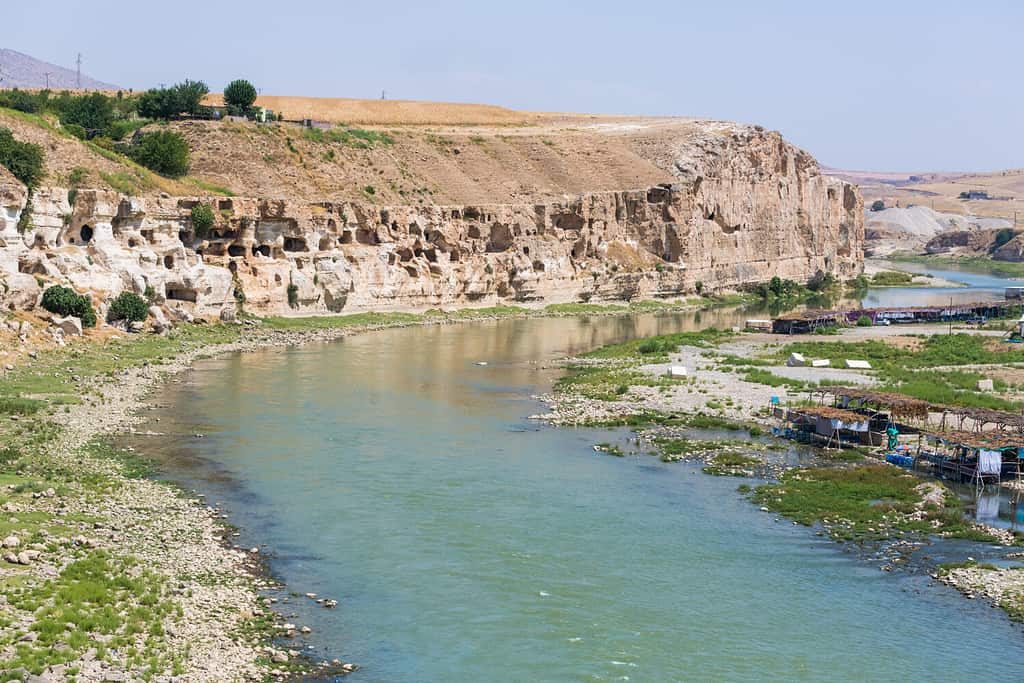
The Tigris River, as it flows from Turkey into Iraq.
©Inna Giliarova/Shutterstock.com
In Eastern Turkey, there is a mountain range called the Taurus Mountains. This range was created by the collision of the Eurasian and African tectonic plates. The Taurus Mountains are the division between the Mediterranean coast of Turkey and the inner Anatolian region. Most of the mountains are made of limestone. This limestone has eroded over time to create some of the largest and deepest caves in the Middle East and Asia.
It is in the Taurus Mountains that we find Lake Hazar, the source of the Tigris River.Llike all rivers, the Tigris has many tributaries and receives water from many sources. Though the general consensus among experts today is that its primary source is Lake Hazar. This is the furthest extent from which the waters that flow into the Tigris River come. The actual Tigris River doesn’t begin until much further downstream.
What is The History of Lake Hazar?
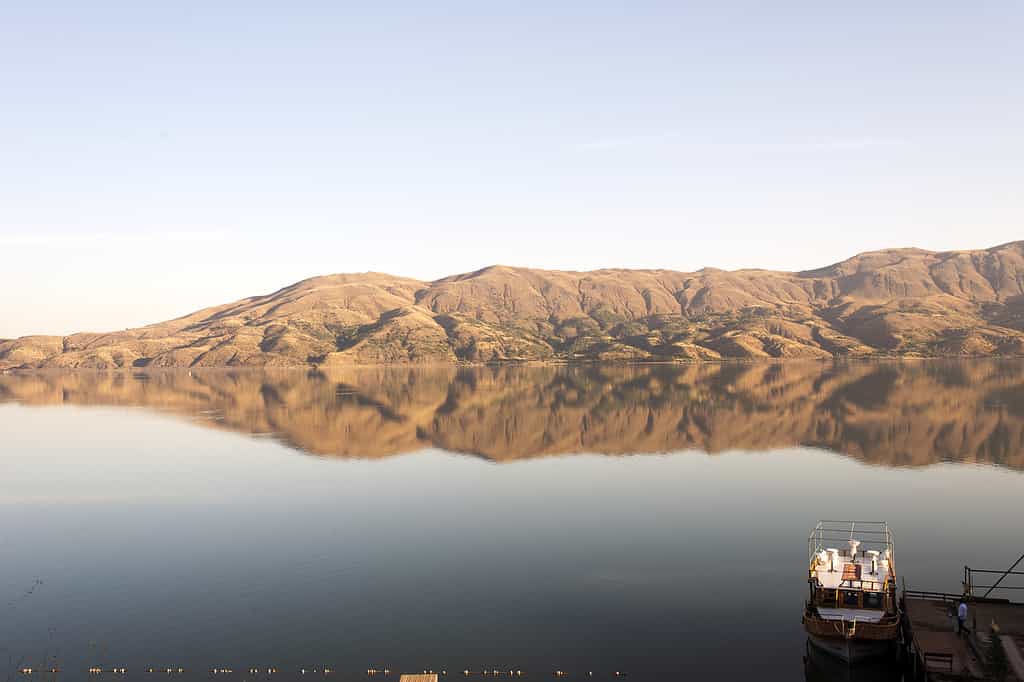
A view of Lake Hazar and the Taurus mountains in Elazig, Turkey
©coolimagesco/iStock via Getty Images
Lake Hazar is a rift lake, formed by the movement of the tectonic plates along the fault line. As the plates moved and shifted, a rift was formed. Water from snow-melt and natural springs then flowed in to fill the rift, forming a lake.
Lake Hazar used to be an important area to the Armenian people. They called it Lake Geoljuk until they were driven out and eradicated by the Ottoman Empire during World War I as part of the Armenian Genocide. Several mass executions took place on the banks of Lake Hazar. It is now exclusively known by its Turkish name, Lake Hazar. Locals call Lake hazar the Secret Sea of the East, or the Hidden Sea of the East.
This lake, however, is not new. It has only existed at its current size for a couple hundred years. It is particularly famous for the sunken city that lies beneath its waves. Divers in the lake have described seeing an ancient citadel, castles, churches, pots, pottery, glazed art, amphora tombs, and more! It has archaeological evidence of the Seljuk Empire, the Ottoman Empire, and the Byzantine Empire. Experts say that the oldest parts of the city are over 4,000 years old. While the hidden city is itself ancient, it has only been submerged by Lake Hazar since 1830.
The Beginning of The Tigris River
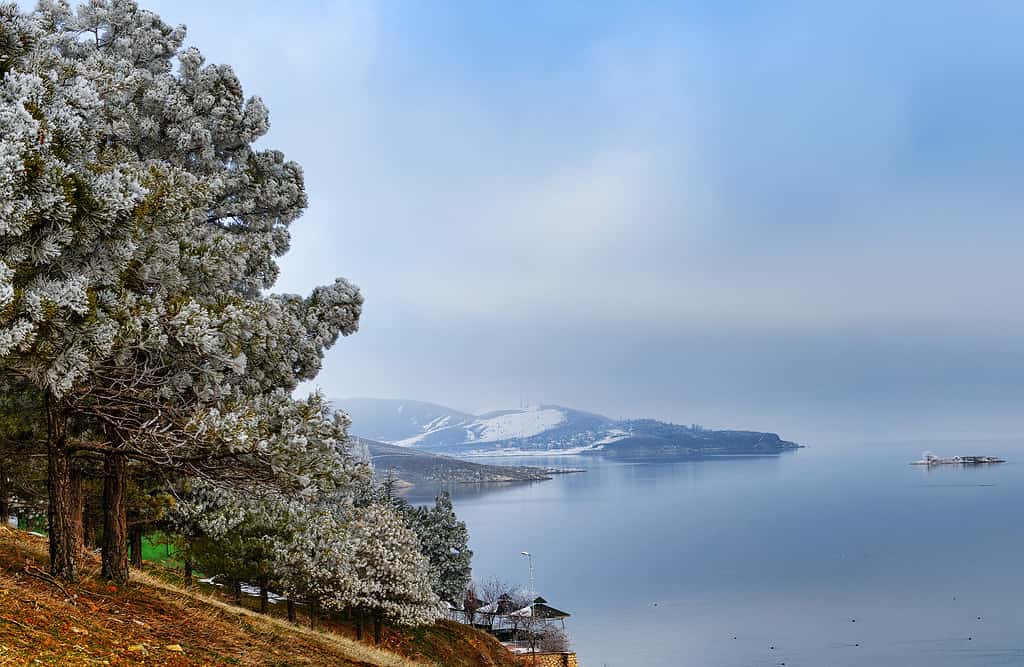
Lake Hazar lies high in the mountains. Snow surrounds it during the winter.
©unguzek/iStock via Getty Images
The start of the river named the Tigris is near the city of Elazığ. This is, surprisingly, only about 19 miles away from the beginning of the Euphrates River. Elazığ sits along the banks of Lake Hazar. The Ottoman Empire destroyed Elazığ during the Armenian Genocide. They rebuilt the city in the years since.
Elazığ and Lake Hazar are popular tourist destinations, not least because of the beautiful and majestic mountain terrain that surrounds them. Turkey is trying to get the sunken city under Lake Hazan to be listed as a UNESCO Heritage Site. If that designation is applied to the city, it will only add to the lake’s popularity as a tourist destination.
Several smaller streams and rivers join to create the Tigris before it joins with the Euphrates. The largest and most notable of these include the Garzan River, the Upper Zab and Lower Zab, the Batman River, and the Anbarçayi River.
Where is Lake Hazar?
Lake Hazar, and the source of the Tigris River lies at an elevation of 1,150 meters above sea level. A small village called Gölardı is the closest town to the source of the Tigris. This town has a population of only 174 people. From here it flows south from Turkey into Syria, then Iraq, and into the Persian Gulf.
The Importance of The Source of The Tigris River

Basrah, which lies along the Tigris, is a hub for international maritime shipping. It relies on the Tigris River for almost everything.
©Nina Assam/ via Getty Images
The fact that both the Tigris and Euphrates rivers begin in Turkey before flowing through Iraq into the Persian Gulf has been a source of contention between Turkey and Iraq for many years. Dozens of dams control the flow of both rivers and their tributaries in both countries. However, with climate change and population growth, the need for water in Iraq has grown dire.
The dams provide water for irrigation, drinking, and industrial use. Turkey continues to build dams along the Tigris River. Iraq and other environmental and humanitarian groups have raised numerous protests and complaints about the ecological and societal impact more dams would have. Iraq depends on the water from the Tigris to survive. So, during times of tension, Turkey has used its control of the source of the water to pressure its neighbor to gain the upper hand in political and military conflict. Unless Iraq and Turkey reach a compromise on the use of the river, and measures are taken to reduce pollution and the impact of human settlements, the river may dry up entirely.
Mythological Source of The Tigris River
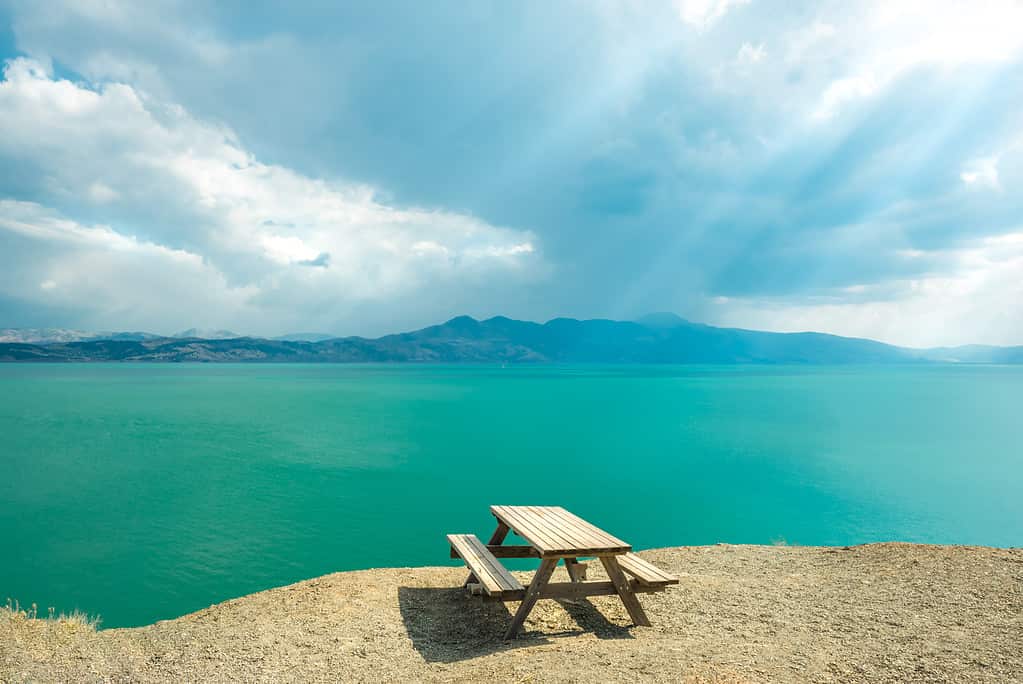
Lake Hazar is a popular tourist destination all throughout the year.
©epicimages/iStock via Getty Images
The Tigris River has been such an important water source throughout human history. So, naturally there are several myths regarding its source.
According to Sumerian mythology, the storm god Enlil created the Tigris. Enlil, chief god of the Sumerian pantheon, slew the primordial sea goddess Tiamat. He built the sky from her rib bones, built the Milky Way from her tail, and put her crying eyes in the mountains to form the Tigris and the Euphrates.
According to ancient biblical accounts, the Tigris is one of a handful of rivers that split from the great river that had its source in the Garden of Eden.
The Hurrian gods of Mesopotamia also have many myths regarding the Tigris River and its source. In fact, the mythical source of the Tigris was a focal point of cult and ritualistic sacrifice and worship. According to one legend, the god Kumarbi spat out the god Aranzaḫ on the mountain Kanzura, which became the source of the Tigris River.
The focus of the Mesopotamian worship of the Tigris River was a place known as the Tigris Tunnel or Tigris Grotto.
The Tigris Grotto
The Tigris Grotto, also known as the Tigris Tunnel is a small cave near Diyarbakır in Turkey. It is only about 750 meters long. For thousands of years, ancient people believed this was the source of the Tigris River. Many people made pilgrimages to the Tigris Tunnel. They made sacrifices and paid respects to the river itself or the gods who protected and controlled the river.
The first reference to the Tigris Tunnel as the source of the Tigris River comes from about 1000 BCE. Many Assyrian kings made the journey to the grotto to make sacrifices, including Tiglath-pileser I and Shalmaneser III. The site was very sacred. The people of the area granted sanctuary to anyone who fled to it. According to legend, any pursuing armies or forces would not attack the people who sheltered there. There are a number of ancient rock reliefs, inscriptions, and other carvings showing the importance of the site.
The photo featured at the top of this post is © epicimages/iStock via Getty Images
Thank you for reading! Have some feedback for us? Contact the AZ Animals editorial team.



